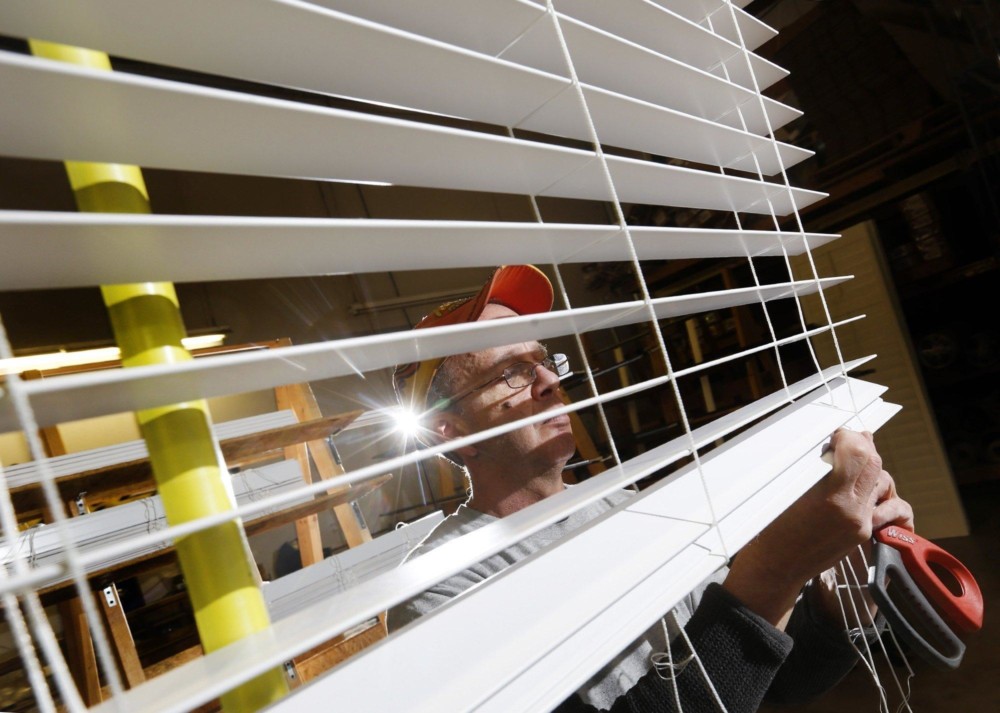By Dan Gearino
The Columbus Dispatch, Ohio
WWR Article Summary (tl;dr) Gina Rieser, oversees a team of 10 employees at her family business, “The Blind Factory.” Rieser explains how the business operates and how she ended up in the family biz.
The Columbus Dispatch, Ohio
In 1983, a bedding entrepreneur started making window blinds on the side. Today, the original business is gone, and its owner has retired, but that side business has taken off and continues to grow.
Central Ohioans know that business as the Blind Factory, now run by the founder’s daughter. It operates as a factory store, making products that it sells while also reselling items from vendors.
“There’s not a whole lot of people doing this kind of stuff,” said Gina Rieser, the second-generation leader of the company.
She has 10 employees, most of whom work on cutting and assembling the components that go into various types of window coverings.
Customers can visit the showroom or set up a home visit by a staff member. The business also repairs window coverings from a variety of makers and retailers.
The Blind Factory occupies a middle ground in its industry. On one side are big-box stores that often have the lowest prices but have few options for customization and offer little service after the sale. On the other side are high-end designers that handle blinds as part of a one-stop shop for interior decorating.
Within the window-coverings industry, a company such as the Blind Factory is called a “work room,” which refers to businesses that specialize in small, custom orders.
“Most work rooms are independent and small, just one person,” said Julie Wood, owner of a drapery business in Derry, New Hampshire, and president of the Window Coverings Association of America, a trade group. Larger businesses, such as the Blind Factory, are much less common, she said.
Sales of window coverings are closely tied to the housing market. Times have been good lately, as homebuying and building have rebounded since the deep downturn that began in 2008, Wood said.
U.S. sales of window coverings totaled $4.4 billion in 2014 and are projected to grow to $5.5 billion by 2019, according to a report from Freedonia Group, a market-research firm in the Cleveland area.
The beginning
Rieser’s father, Don Grove, was a traveling salesman early in his career, working on behalf of home-furnishings makers whose products were sold in department stores. In the late 1970s, several of his department-store customers stopped selling some of the bedding and other products he was representing. He took this opportunity to buy up the inventory at a big discount and start a store.
Bedspreads and Things opened in 1978 in Westerville, run by Don and his wife, Ann. In 1983, while Bedspreads and Things was going strong, Grove started the Blind Factory, a small manufacturer that he thought would fill an opening in the market for custom window treatments, Ann Grove said.
Daughter Gina graduated from high school in 1981. She and her brother worked part time at the bedspreads store.
Then the store ran into a buzz saw of competition. The Groves decided to close in the late 1990s because of the arrival of Linens and Things and the impending opening of Bed Bath & Beyond. By then, the store had moved to the Dublin area.
“We couldn’t compete with the discounts they were giving,” Rieser said. “So my dad said, ‘Let’s expand the Blind Factory, and you guys come in here,’ and that’s what we did.”
The Blind Factory became the family’s main business. It grew to a peak of 30 employees providing blinds, shutters and other products.
The next big change was in 2007, when Don Grove retired, followed in 2008 by the economic downturn. Ann Grove and Rieser led the business through a downsizing of the product lines and staff.
Today, Don stops by from time to time but mostly keeps in touch with the business through his wife, who remains a regular presence. Rieser is the manager, and Ann Grove is the president.
The Blind Factory makes about 30 percent of the products it sells, but the items made in-house are a vital part of maintaining decent profit margins, Rieser said.
Prices start at about $85 for blinds on a standard-size window and range up to about $800. The company’s largest orders exceed $20,000, for blinds, draperies, and lots of add-ons such as motorized and remote-control systems.
These days, some of the most popular window coverings are “cellular” shades, which are made of a pleated fabric that lets in some light but provides privacy and shade.
Customers also can select products made by vendors such as Comfortex and Hunter Douglas. Comfortex, based in upstate New York, is the key supplier; it makes many of the parts that the Blind Factory uses in custom orders.
Rieser, 54, said business has been on a long upswing.
The future might include a third generation of the family: Rieser’s daughter, 23, has shown an interest in the company.
“It’s growing,” Rieser said. “I’m very optimistic.”














































































































































































































































































































































































